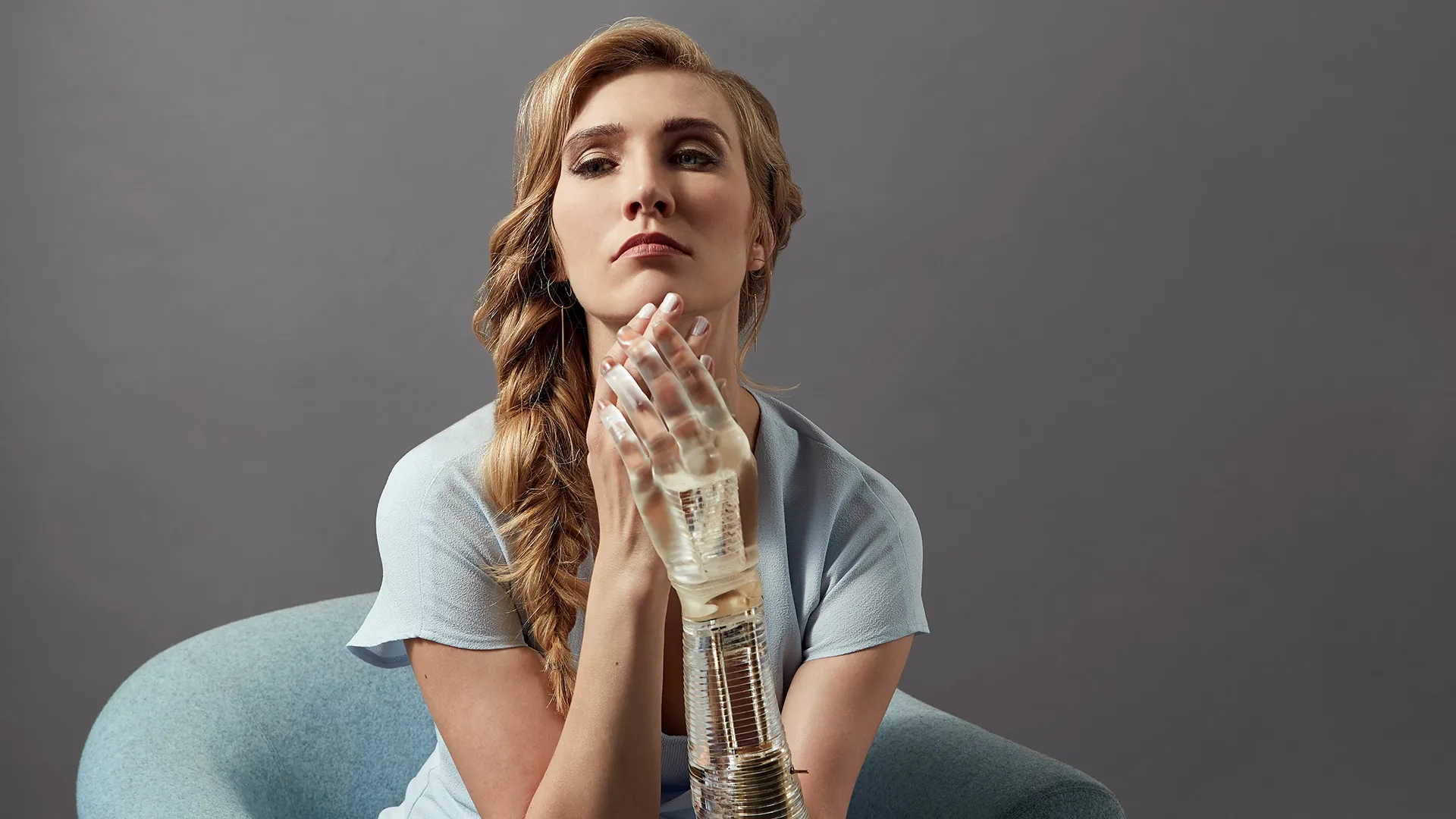

Prosthetic design, intimate and innovative

Rethinking the limits of the human body and appreciating ourselves for who we are, rather than looking at what we lack… Seattle-based Gray Magazine reports on Sophie de Oliveira Barata’s Alternative Limb Project, in which the prosthetic design highlights the human personality.
When we imagine a prosthesis, we spontaneously think of a flesh-coloured product, one that blends in with our skin colour. Not so for Sophie de Oliveira Barata. This designer, who graduated from the London School of Fashion, in fact transforms prostheses into veritable works of art. She developed her passion when working in a hospital, after which she went to work at a traditional prosthetics company. It was there that, thanks to a girl who wanted to customize her prosthetic leg with cartoons, de Oliveira Barata had the chance to create her first design. Upon leaving the company, she launched her own venture, the Alternative Limb Project, in 2011, with a mission to “bring life and soul to a prosthetic, to highlight what’s there as opposed to what’s missing.”
In 2012, de Oliveira Barata created her first three works for the Spare Parts exhibition at the Science Gallery in London. Around that time, she read an article about model Viktoria Modesta and was inspired by her story of struggle and courage. The ensuing collaboration led to her making five limbs, from Spike, a tribute to power-dressing in fibreglass, steel and glossy lacquer, to Stereo Leg, featuring engine and stereo parts in combination with chains, jewellery and crystals. At the 2012 Paralympics, Modesta’s use of a Swarovski-studded crystal prosthesis brought global attention to a product niche that, historically, has spent very little time in the limelight.
The designer has never been interested in creating similar designs: every piece is a one-off, co-created with the client in terms of aesthetics, function and sourcing partners, artisans and materials. The process can take up to a year for final completion. For de Oliveira Barata, every prosthetic is an experience that teaches her something new, as well as a mission to inspire the community to appreciate difference.
Credits
Original text: Heidi Mitchell
Photo: courtesy of GRAY Magazine
Magazine: GRAY Magazine
Publisher: GRAY Media, LLC

















